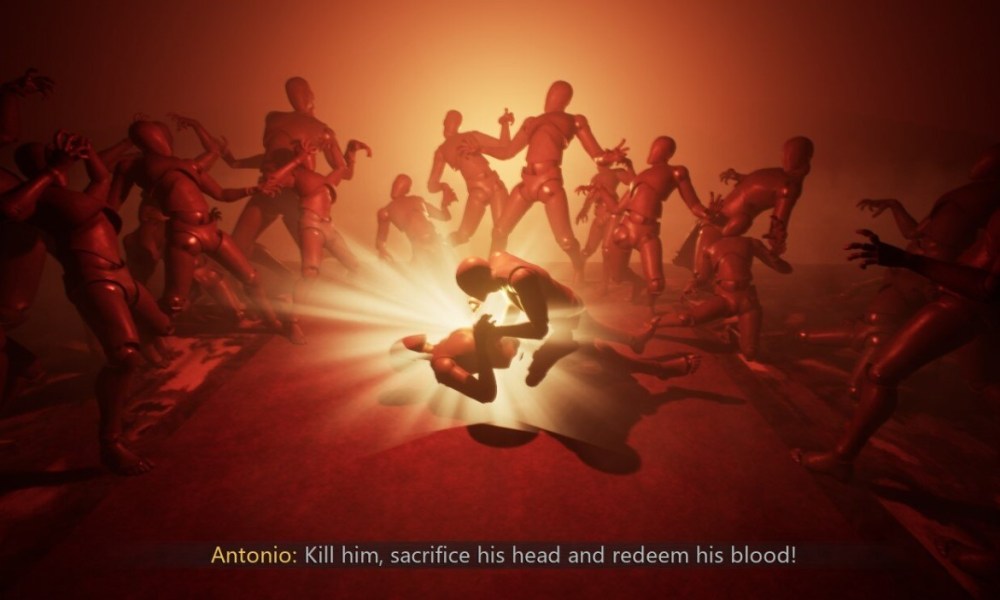
‘SCP: Secret Files’ Review – Anthology Game Nails the Spirit of the SCP Foundation Source Material
Evolving from humble beginnings — which can be traced back to an unassuming internet discussion board, circa 2007— The SCP Foundation has really come a long way over the past 15 years. And it’s earned itself quite the fan base as a result.
It’s not difficult to see why a tantalizing concept like this one would have such incredible longevity. After all, the notion of a clandestine organization, tasked with keeping the inexplicable under lock and key, is certainly fertile ground for all kinds of amazing storytelling.
By just dipping your toe into this universe, you’ll be treated to an all-you-can-eat buffet of demented urban legends, each more creative than the last. Among other things, there are immortal plague doctors (capable of killing via mere skin contact), condensed windowpanes that can be written on to communicate with parallel worlds, and household appliances that somehow compel you to refer to them in the first person.
Not only do these macabre ideas defy pigeonholing in terms of their genre (some are mysteries, while others are horror tales and even comedies), but they also transcend mediums. If you are curious about venturing down the bizarre SCP rabbit hole, then you’re not limited to just the written word anymore, as the mythos has been translated into audio transcripts, video games, fan art, YouTube clips and, more recently, viral TikTok videos.
In short, although it started life as just another voguish creepypasta, the SCP universe has become something far greater in the intervening years. What was once just a handful of 4chan users — posting quirky short stories and faux science reports for their own personal amusement — has since blossomed into a bona fide cult phenomenon.
Enlisting hundreds upon hundreds of gifted people, it’s pretty much the ultimate example of a “Collaborative Fiction Project”. The dedicated wiki has enviably-talented authors writing in multiple different languages, steadfast moderators enforcing quality control, diligent licencing staff, and the kind of intense following that is usually reserved for only the holiest of pop-culture artefacts.
One thing that SCP doesn’t have though, is an overarching sense of continuity. Instead of there being a unified canon that must be rigidly stuck to, the lore is in a constant state of flux and pre-existing details can be totally ignored (or even outright contradicted) depending on the whims of the individual writer. In the words of the wiki’s newcomer guide: “As long as the story is interesting, your freedom [here] is basically unlimited.” For instance, in some iterations the SCP Foundation was formed in the 1960s, while in others its activities date back as far as the 19th century.
Although this might be liberating for some creators, it does pose a unique problem for anyone who is trying to comprehensively adapt the unwieldy IP. After all, how does one go about faithfully representing something, when it’s already fragmented and littered with inconsistencies to being with? Where do you even start?
Developer Game Zoo Studio has found an elegant solution to this quandary with their debut title, SCP: Secret Files, by creating what is essentially the video game equivalent of Creepshow. You see, the new release title cherry-picks some of the very best concepts from the wiki and then compiles them together into a unique anthology experience, with each chapter having its own idiosyncratic characters, art styles, controls, and gameplay mechanics.
The game’s framing device has you playing as an MIT grad, named Karl, who has been head-hunted for the Foundation’s archives department. Of course, the recruitment process here wasn’t exactly conventional, and so you know hardly anything about the job by the time your first day rolls around. All you’ve been told is that you need to listen attentively to your superiors and that it is of paramount importance that you don’t take any dumb risks.
Upon arriving at your 9-5, you then endure what is quite is possibly the world’s worst induction. There are too many red flags to count, but you soon get the feeling that HR isn’t really a top concern for the Foundation anyway.
Before you even get to your first lunch break, you’ve already had to sit through an incredibly vague orientation, been tersely greeted by the senior management, suffered derisive hazing at the hands of your colleagues, and learned that painful death is just an accepted risk in this hazardous workplace environment. Most disturbingly of all, you’ve also got to put up with an obnoxious Rick & Morty fanboy who keeps making incessant references to the show in your group chat.
As for your duties as an SCP archivist, your job is to shift through redacted documents (reporting on Foundation incidents) and neatly file them away in the correct place. Once you get into the rhythm of this administrative task, it actually turns out to be quite a satisfying minigame in its own right. In a repetitive and mundane sort of way.
Some of the archives require closer inspection though, with video files or audio transcripts that you are obligated to process. It is here that the true gameplay comes in, as delving into those particular case-studies is what allows you to experience the meat of SCP: Secret Files.
At launch, there are a total of five “episodes” here — but room is set aside for expansion, should there be sufficient appetite for it — and they all have something unique to offer. For example, one of them is a straightforward (albeit unsettling) FPS horror in the vein of Amnesia, while another is a strange combination of visual novel and rhythm-action game.
As is inevitably the case when it comes to anthologies, there are peaks and troughs, but for the most part the quality remains consistent throughout. It also helps that the whole thing is blisteringly paced, meaning that whenever there are dull sections, they are at least short-lived.
On that note, you can get through any given episode of Secret Files in well under an hour and the developers are constantly throwing new elements into the mix to keep you on your toes. One minute you’ll be driving a truck around a desert wasteland — collecting refuse that materializes out of thin air — the next you’ll be stealthy evading a malevolent creature in a funhouse maze or using psychokinetic abilities to hurl cars around a secret facility.
The sheer variety of interactions on display (some of which only feature once and are then never used again) ensures that the experience remains fresh at all times. You’re always excited to discover what unexpected mechanic is going to be around the next corner and there are some fun, wacky surprises. Hell, there’s even a bit where it becomes a Flappy Bird clone for approximately 20 seconds, and it makes complete sense within the context of the narrative.
In that regard, SCP: Secret Files perfectly embodies the eclectic feel of its source material, by flaunting the conventional wisdom that stories ought to have a consistent style or genre. On the other hand, this anything-goes approach can have the unintended effect of inducing tonal whiplash.
Case in point, there’s a bit in one of the earlier episodes wherein you are forced to walk through a dingy room that is strewn with (realistically-animated) hanging corpses. It’s a genuinely chilling image and the ominous sound design conspires to make it even more disturbing. Then, not 20 minutes later, you’re suddenly whisked off to a bright, wholesome storybook world (rendered in a beautiful watercolor aesthetic), where you are made to play catch with a friendly origami dragon. Suffice it to say, the two moments don’t gel.
The problem is not necessarily that these incongruous levels appear in the same anthology, but that they are barely spaced apart. It is possible to successfully flit between darker and lighter tones in a piece of fiction, but Game Zoo Studio needed to give more thought to their awkward sequencing of events and clunky transitions. Because, as it stands, the dramatic lurch between episode 2 and episode 3 here feels borderline schizophrenic.
Putting that issue of cohesiveness aside, the individual chapters in SCP: Secret Files are a blast to play through and they all find interesting ways of telling their respective stories. “The Hanged King’s Tragedy” is an effective bite-sized horror (especially if you happen to suffer from Automatonophobia), “Here Were Dragons” tugs at the heartstrings by getting you to organically develop a bond with its titular beasty, and “Remember Who You Are” visualises a trip inside somebody else’s mind by getting you to complete a series of diverse puzzles.
Out of the bunch, “Unknown Calls” is probably the standout. This freaky, Twilight Zone-esque tale puts you in the shoes of a death row inmate, who has been made the hapless guinea pig of a Foundation-run experiment. Every morning, this poor soul wakes up in confined living quarters, eats a meal of synthetic slop that is delivered to him via a chute, and is forced to undergo a gauntlet of irritating psychological tests. Once that’s out of the way, he then completes his daily routine by heading out into a barren wasteland to deliver garbage to a nearby incinerator, all without being told why he is doing any of this.
It’s hard not to get enthralled as you gradually peel back the layers of this intriguing mystery and build towards a devilish downbeat twist. Meanwhile, cel-shaded graphics lend the episode a bit of visual flair, and the developers cleverly use video-game language to make you empathise with your character, without relying on expository dialogue. Even if it were separated from the wider anthology and sold separately, “Unknown Calls” would still be worth playing as a standalone piece of oddball science fiction.
Yet it is part of a larger package and one that is guaranteed to please SCP newbies and diehards alike. Speaking of which, there are tons of insider references and cute easter eggs to discover — including a plushie incarnation of a certain villain — so you can tell that Game Zoo Studio deeply cared about the lore they were adapting here.
It’s a clear labour of love that absolutely nails the spirit of the original source material. Which is no mean feat considering just how implacable that original material is.














